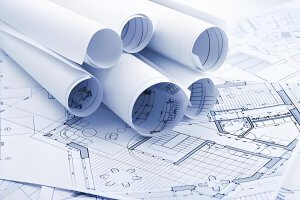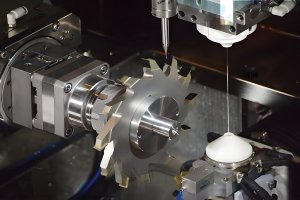Introduction to CNC Machining
CNC (Computer Numerical Control) machining is a manufacturing process that utilizes computerized controls to initiate and manipulate machine tools, such as lathes, mills and grinders. With the ability to interpret designs generated by Computer-Aided Design (CAD) software, CNC machines perform various tasks, including drilling, cutting, or shaping materials with extreme precision, significantly reducing the potential for human error.
Its importance in different industries cannot be overstated. In automotive industries, it allows for the rapid production of complex parts with high accuracy. The aerospace industry uses CNC machining to produce safety-critical components that need to adhere to strict regulations and standards. Furthermore, the medical sector employs this technology to manufacture surgical instruments and implants needed for surgeries and treatments. Other sectors like consumer electronics and construction also heavily rely on CNC machining due to its advantages.
Early Development and Use of CNC Machines with Aluminum
In the early stages of CNC machining, aluminum was a primary material utilized due to its unique properties. High speed machining rates were enabled by this metal’s ability to endure high feed rates, thus increasing manufacturing efficiency. Yet, while being lightweight and exhibiting superior thermal conductivity, it also demonstrated excellent machinability characteristics that allowed for easy integration into the CNC process.
- The benefits: The use of aluminum in CNC machines brought along several benefits. First, as compared to heavier elements like steel or iron, aluminum’s lightweight property reduced the energy needed for machining. This significantly lowered operational costs. In addition, aluminum produced less wear on tools, helping reduce maintenance efforts.
- The challenges: Despite significant advantages, there were limits when using aluminum as a primary material. Its relatively soft nature made it prone to deformation under excessive heat or pressure. Also, the fineness and consistency of aluminum chips posed a challenge to chip evacuation systems, potentially leading to equipment damage over time.
Evolution Towards Composite Materials in CNC Machining
In the realm of Computer Numerical Control (CNC) machining, there has been a significant evolution from relying heavily on aluminum towards using more composite materials. A composite material is essentially a combination of two or more materials that yield superior properties when merged together, making it ideal for certain manufacturing applications. For instance, by blending plastic with glass fibers, you can create a material much stronger than either component individually.
The shift from aluminium to composites was initiated due to several reasons. Firstly, compared to metal materials, composites are inherently corrosion resistant, require less maintenance and most importantly they possess a higher strength-to-weight ratio, meaning these materials are much lighter yet equally strong as metals. Secondly, advanced composites offer thermal stability and sound insulation property which are favorable in different fields like aerospace, automobile etc.
- Corrosion resistance
- Less maintenance requirement
- Higher strength-to-weight ratio
- Thermal stability and noise insulation
This transition has had a profound impact on the manufacturing industry, leading to improved efficiency, cost-effectiveness, and product durability. Companies have begun adopting this technology, capitalizing on its numerous advantages such as reduced energy consumption and increased aerodynamic performance. The integration of composite materials into the machining process marks an essential progression in the production sector.
Advantages of Using Composite Materials in CNC Machining
Composite materials offer several advantages in CNC machining, including:
- High strength-to-weight ratio
- Corrosion resistance
- Design flexibility
- Reduced tool wear
- Enhanced damping properties
Future Perspectives of CNC Machining
The current trends in CNC machining lean towards the utilization of composite materials. The drive for this shift stems from the need for higher performance, light-weight parts that can withstand high stresses during operation. Innovations such as resin transfer molding (RTM) are allowing even greater facilitation and simplification in the creation of these composite parts.
- Resin Transfer Molding: This is an infusion process where resin is injected into a closed mold where dry fiber has been placed. It ensures more accurate control over the final product’s structure and properties.
In terms of future developments and predictions for CNC machining, it is anticipated that advancements in artificial intelligence (AI) and machine learning will play pivotal roles. These technologies could lead to automated tool paths or real-time adaptive adjustments responsive to sensor feedback. Predictive maintenance using AI-driven algorithms could also significantly enhance both the efficiency and lifespan of CNC machines. Furthermore, with Industry 4.0 paving the way for smart manufacturing, it wouldn’t be too far off to envision a completely autonomic CNC setup capable of self-diagnosis, repair, and part-preference based upon upcoming workload projections.
Conclusion
The journey of CNC machining from working predominantly with aluminum to using composite materials is a significant evolutionary step in the industrial sector. The transition to composite materials has allowed for enhanced performance, precision and durability across diverse industries. It cannot be understated how important these transitions have been to modern CNC machining since it meaningfully impacts both economy and efficiencies. For example:
- Fiber-reinforced polymers (FRPs) contribute to cost reduction by delivering efficient production rates while minimizing material waste.
- Simultaneous usage of multiple distinct composite materials allows fabricating complex parts designed intricately with an extended life cycle.
In conclusion, this evolutionary shift from aluminum to composites represents CNC machining’s adaptation to meet higher industry standards and productivity demands. This progression underlines the constant evolution that characterizes the dynamic field of manufacturing technology.
Other Articles You Might Enjoy
- Is Copper the Right Choice for Electrical Component CNC Machining? A Detailed Analysis
CNC Machining of Electrical Components Utilizing Copper In the field of electrical engineering, Computer Numerical Control (CNC) machining plays an integral role, particularly in the development and manufacturing of electrical…
- Understanding Bead Blasting in CNC Machining(china machining Avery)
Bead blasting, a compelling term in the world of Computer Numerically Controlled (CNC) machining, is an influential process that plays a transformative role in optimizing and enhancing parts' aesthetic and…
- Understanding Bead Blasting in CNC Machining(cnc g code Jacqueline)
CNC (Computer Numerical Control) machining is a dominant method employed for multiple manufacturing systems across the globe. From healthcare to aerospace, this technology has revolutionized how we manufacture products. One…






